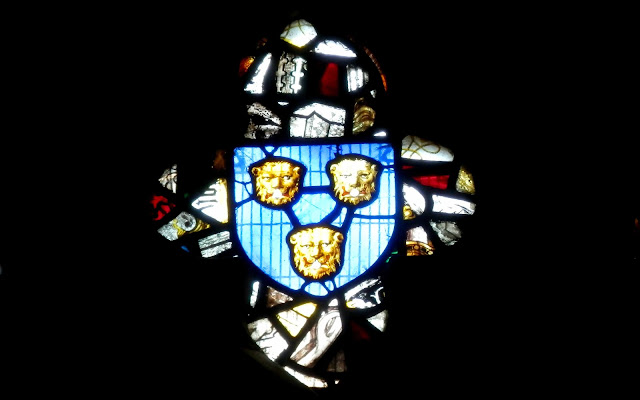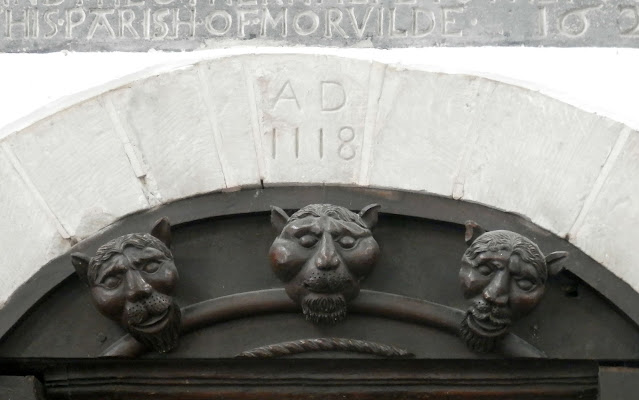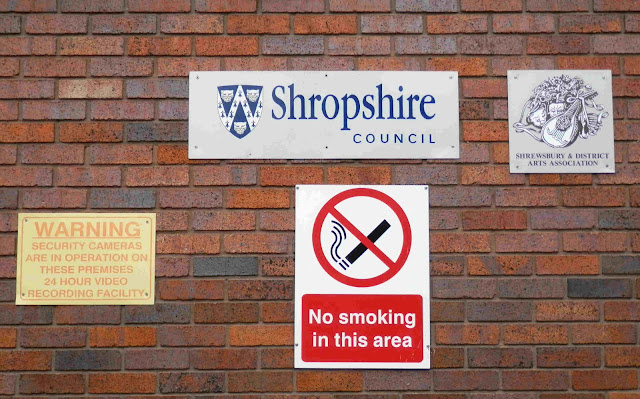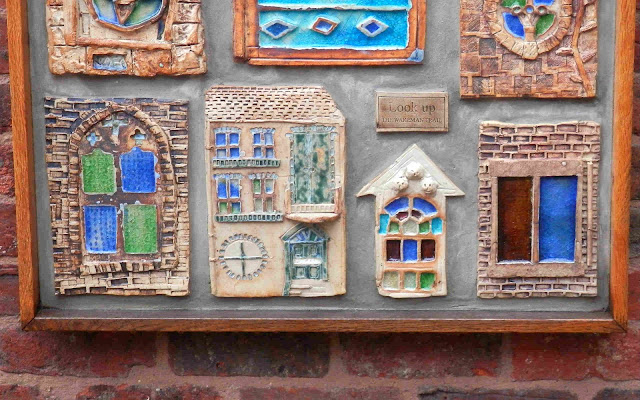
This is one of the least known examples of loggerheads in Shrewsbury even though many tourists pass it ever year.
The reason is: this particular set is featured in a stained-glass panel very high up at the top of a window in the Trinity Chapel in St Mary’s Church. You need binoculars to see them clearly.
When you do see them, you'll notice they have no lolling tongues like the standrd loggerheads.
The tracery around it is clearly of ancient fragments of glass, but it’s doubtful that the loggerheads work is as old.
Why are they up there anyway? The rest of the window has nothing to do with Shrewsbury.
Anyone want to try a guess?
They are so high that no-one has been able to get up there to check what age the glass is; and there seems to be no record of its installation.
The last mystery is that, if you look carefully, there are little white circles over the centre of the loggerheads' mouths. What are they? A glazier's mark, or something more significant?
Please let us have your thoughts... Use the comments field just down this page.
If you'd like more of these loggerheads mysteries as soon as they are posted (weekly), just use the Follow By Email box (which you will see in the upper right-hand corner of this page)










